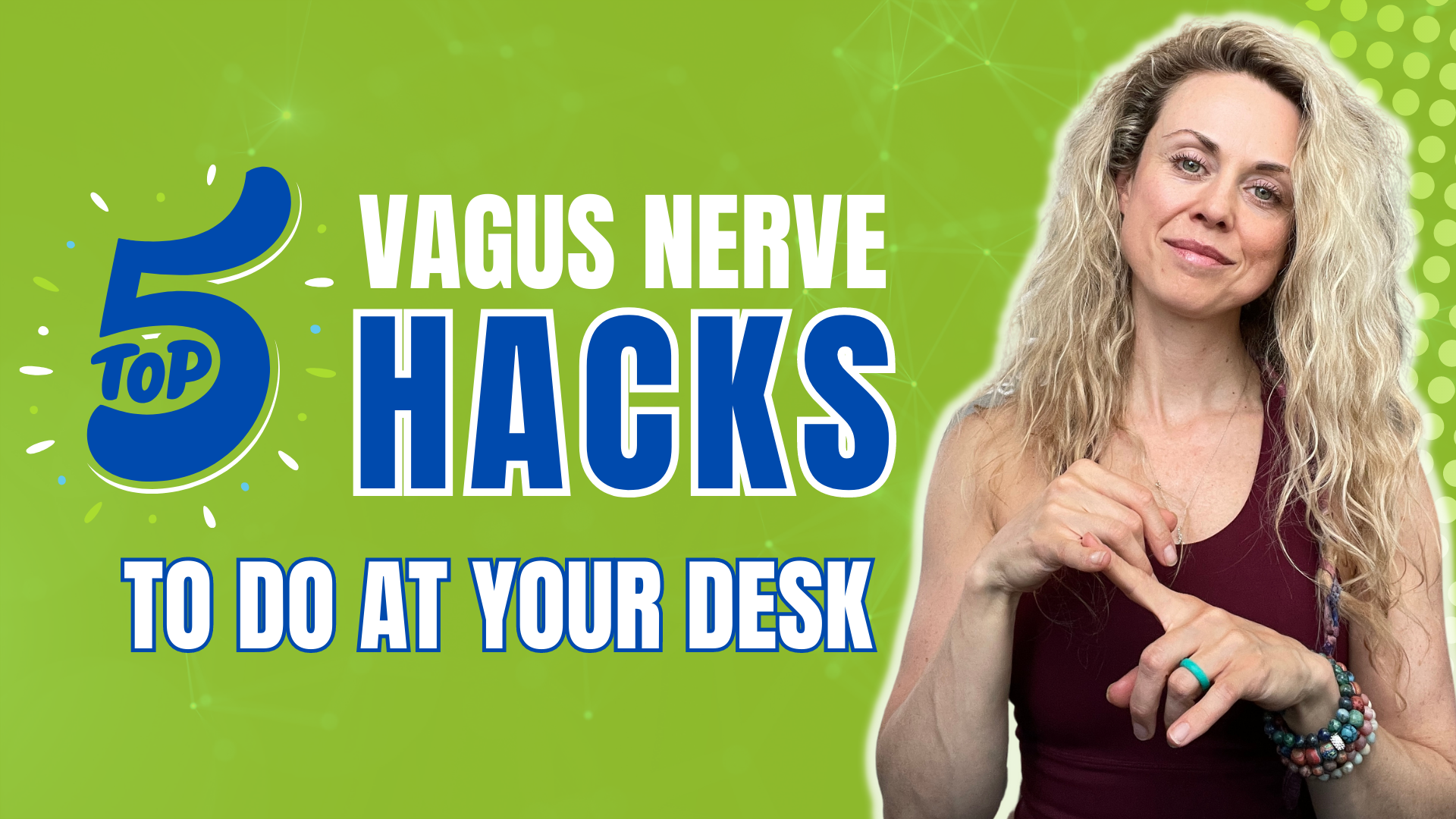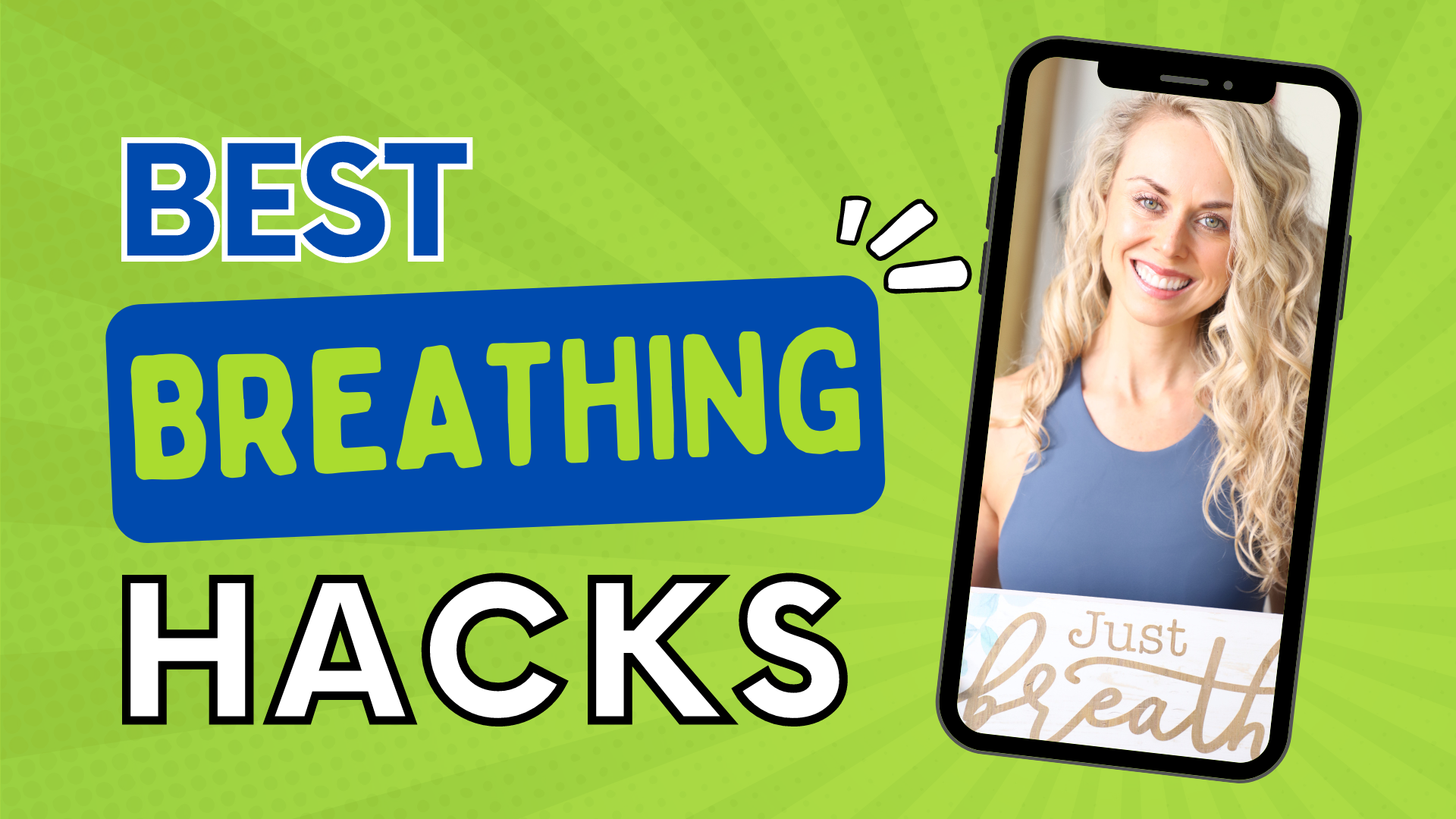Have you ever felt stressed or anxious but didn’t have the time or space to go for a walk or do a full meditation? Well, you’re not alone! Many of us face this challenge in our busy lives. The good news is that there are simple vagus nerve hacks that you can do at your desk to quickly regulate your nervous system, no matter the situation.
In today’s blog post, we will share five easy techniques that you can try right now to activate your vagus nerve and promote relaxation. While these techniques are not a replacement for physical activity, they can be a quick and effective way to calm your mind and body in a pinch.
So, grab a seat, take a deep breath, and let’s dive into these five simple vagus nerve hacks that you can start incorporating into your daily routine today. And don’t forget to check out our other resources on vagus nerve exercises and understanding this fascinating aspect of our nervous system!
Rather watch or listen?
5 vagus nerve hacks to do at your desk
1. The Salamander
One of my all-time favorite exercises for improving neck mobility, reducing pain and stiffness, and regulating the nervous system is called the Salamander. It’s a combination of Stanley Rosenberg’s Salamander exercise and some modifications I’ve found to be effective for many of my patients and clients.
To do the Salamander, interlace your fingers and place your hands at the back of your head on the occipital area. Next, side bend your upper body while looking in the opposite direction with your eyes. If this causes discomfort, such as headaches, eye pain, or dizziness, adjust your vision to a soft gaze. Hold this position for about 30 seconds before returning to the center and switching to the other side.
During the exercise, you may notice a yawn or a swallow, which is a sign of nervous system relaxation. After completing the Salamander, test your neck’s range of motion, and you’ll see an immediate improvement.
The Salamander works by providing neurological input from our eyes and hands to the brain stem, where the vagus nerve and the spinal accessory nerve are located. This stimulation increases blood flow to the area, which helps relax the neck and nervous system.
I highly recommend giving the Salamander a try if you’re experiencing neck discomfort or nervous system dysregulation. It’s a simple yet effective exercise that can make a big difference in how you feel.
2. Salivating
This is one of my favorite exercises because it can be quite effective, and no one knows what you’re doing. It’s a self-limiting vagus nerve exercise, meaning it can only have a positive effect, and nothing can necessarily go wrong.
Generating a copious amount of saliva is, in fact, a parasympathetic response. If you have trouble generating saliva, it can indicate that you might be in a fight-or-flight state. However, with a little effort, you can proceed with the exercise.
First, place your tongue at the roof of your mouth and press against it through your mouth. Keep pressing against the teeth, and you’ll start to generate some saliva. You can also think about something appealing, like a juicy lemon or orange, to stimulate saliva production.
Once you’re able to produce saliva, let your tongue bathe in it for a while before ultimately swallowing it. Swallowing is a sign of nervous system relaxation. The pharyngeal branch of the vagus nerve innervates the back of the throat, and this exercise stimulates it. It’s typically a self-limiting exercise, making it easy and beneficial to do.
Watch: Vagus Nerve Hack | Salivate
3. Breathing Technique
In this technique, I will be discussing a basic breathing method that involves a short inhale and an extended exhale. While there are many different breathing techniques, such as 4-7-8 breathing and box breathing, it’s important to choose the right one for your specific needs and situation.
If you’re feeling a bit anxious at work due to having multiple tasks to complete and want to calm your system down, this method is great for you. On the other hand, if you need to be alert and focused for an upcoming meeting, box breathing might be more suitable.
For this technique, imagine taking a small inhale and exhaling for about double the length of the inhale. There’s no exact time that you need to follow, but the extended exhalation will stimulate the vagus nerve, which releases a neurotransmitter called acetylcholine, resulting in a relaxation response. The vagus nerve passes through the diaphragm, so practicing this extended exhale is an effective way to quickly calm your nervous system.
However, some people may feel a sense of air hunger when attempting this technique. This happens when your body struggles to maintain the proper amount of carbon dioxide in your bloodstream. If you experience this, simply return to normal breathing for at least a minute before trying again. Even doing three breaths in this manner can be a powerful way to calm your system. Feel free to check out my videos on breathing for more techniques to suit your needs.
Watch: Best breathing hacks
4. Hand Reflexology
Hand reflexology is one of my favorite techniques, and it has its roots in Eastern medicine. There are specific reflexology points all over the body, including one on the hand and another on the bottom of the foot, that are related to the vagus nerve.
If you’re sitting at your desk, it’s really easy to try this technique out – I’ve even done it while in the car, using the same hand. To begin, locate the reflexology point on the inside of your pinky finger. You can work on either side, so choose the one that feels more comfortable for you. Starting from this position, you can begin by making slow circles or rubbing back and forth. Then, you can apply more pressure to go deeper or just use a feather-light touch.
You don’t have to use all of these techniques – you can try one, two, or all three of them, depending on what works best for you. If you don’t have time to use both hands, you can just use your thumb to apply pressure.
It’s important to keep in mind that not everyone will have the same response to this technique. If you don’t feel anything right away, don’t worry – it might just mean that your nervous system isn’t responding at the moment. Give it time and be patient. The key is to try it out for yourself and see if it works for you.
Watch: Vagus Nerve Hack | Hand Reflexology
5. The Ear Pull
The ear pull is an incredibly powerful technique that is both a vagus nerve exercise and a craniosacral exercise. To perform the ear pull, grab the earlobe and gently pull it back and out while holding that position. You will likely have a response almost immediately, and you can hold that position until you feel satisfied. If you prefer, you can hold the position for about a minute or two.
Another technique that you can try is massaging inside the ear. This technique is particularly powerful because the vagus nerve has branches in the ear, making it one of the direct ways to stimulate it. By pulling the ear, it influences fluids in your brain and affects the membranes as a craniosacral technique.
Watch: Vagus Nerve Hack | Auricular Ear Release
The Bottom Line
My patients have experienced a lot of positive responses with these techniques, and I hope they can be helpful to you as well. Don’t forget to check out all of my vagus nerve exercises and videos for more techniques to try.
I hope that you will give these a shot, and just remember that this is a way for you to begin to learn about your own nervous system—how to regulate and control your state.
If this was helpful, please give it a like and a share. Make sure to subscribe to our YouTube channel, The Movement Paradigm, for weekly tips on mindset, nutrition, and movement. And don’t forget to subscribe to our channel. Thank you!
If you’re looking for support on your health journey, we’re here to help! Feel free to reach out to us for a discovery session.
Other things that might interest you:
What if vagus nerve hacks aren’t working


